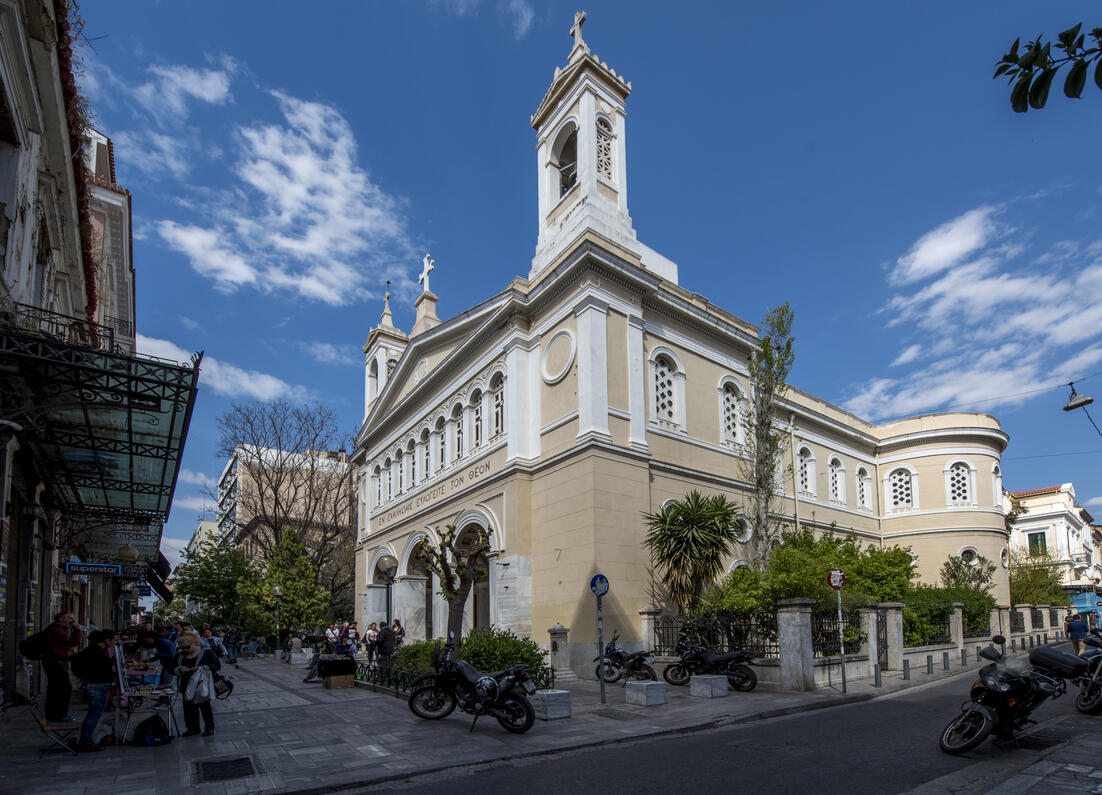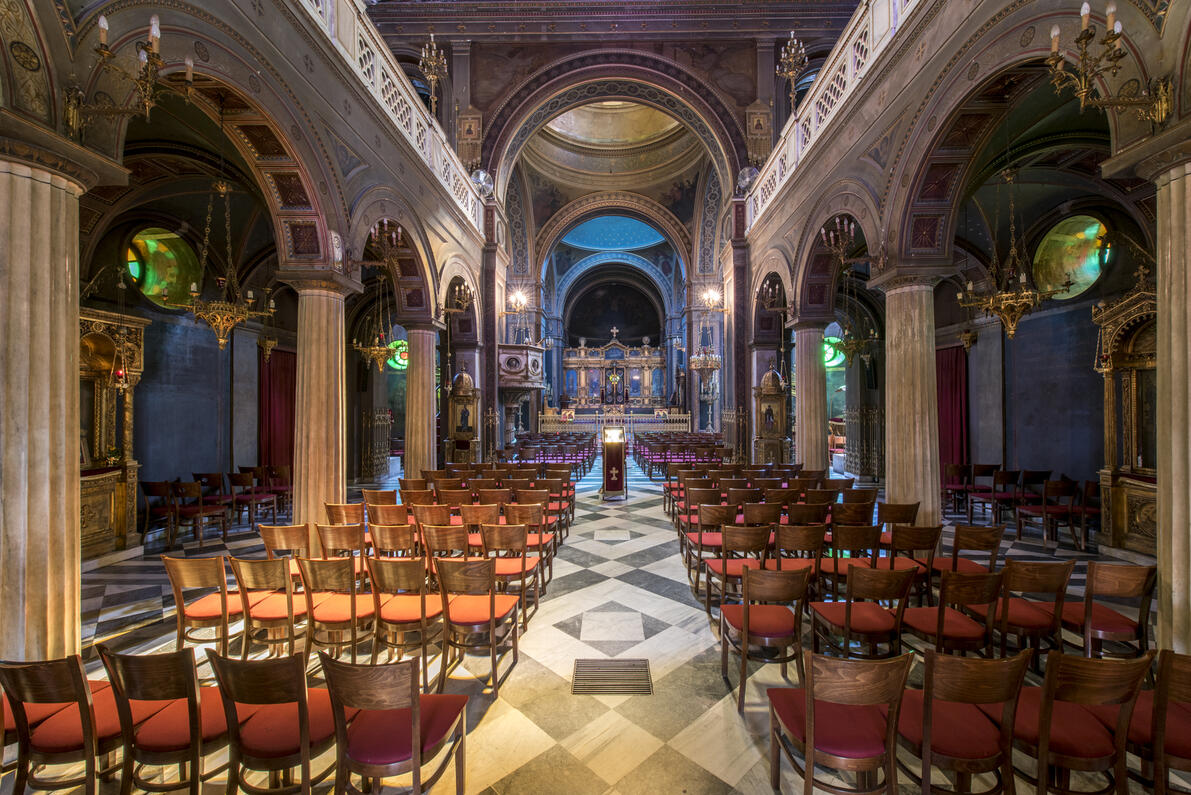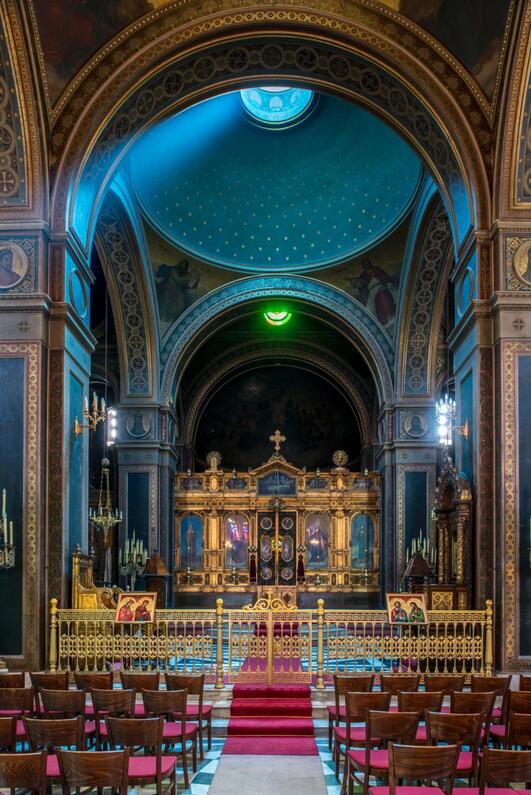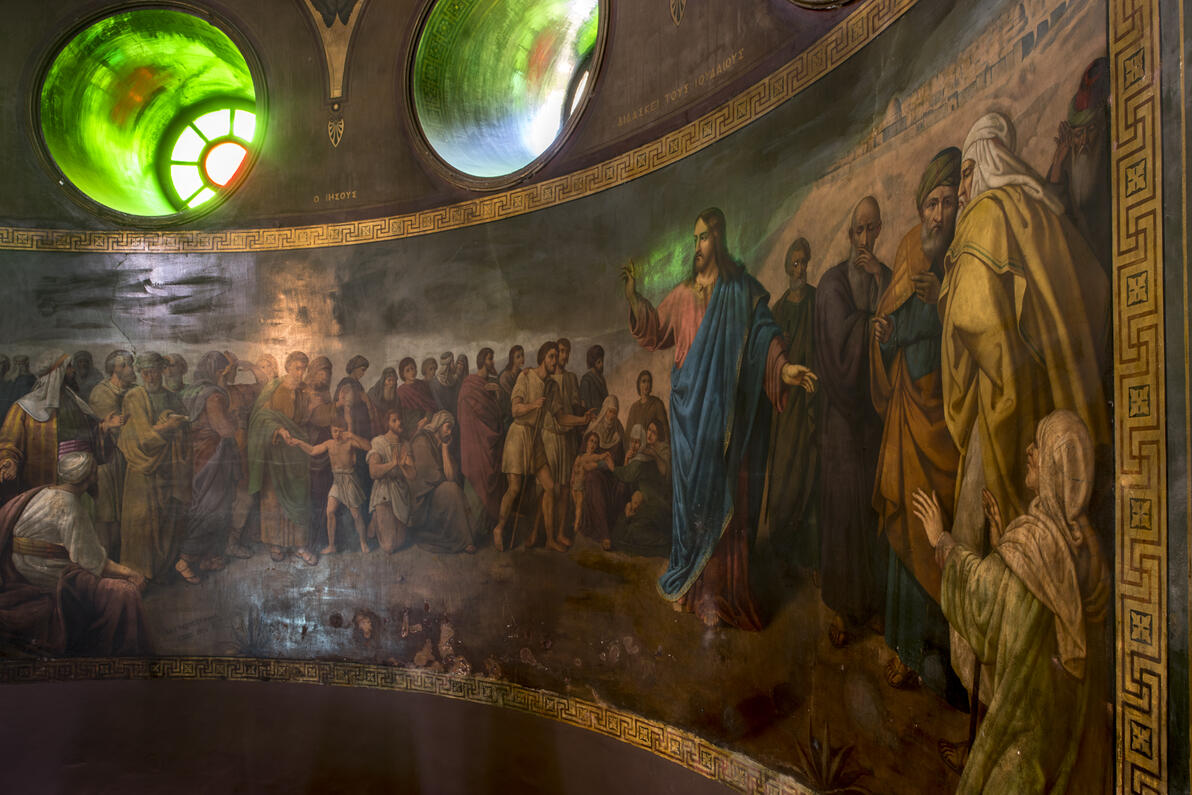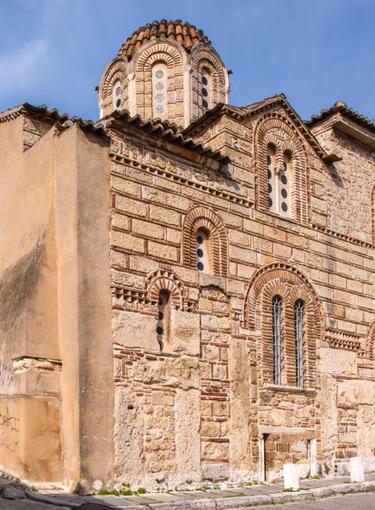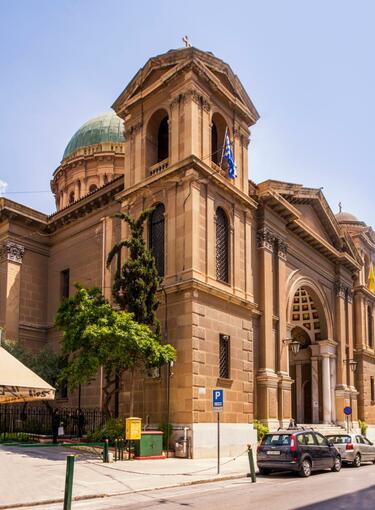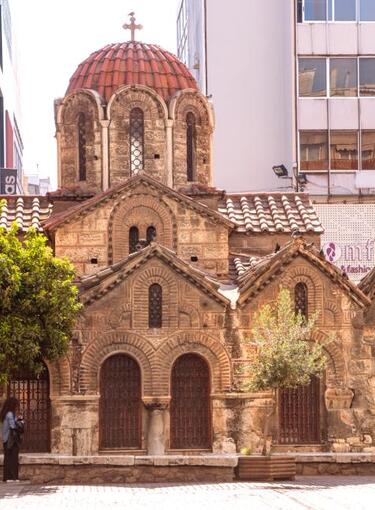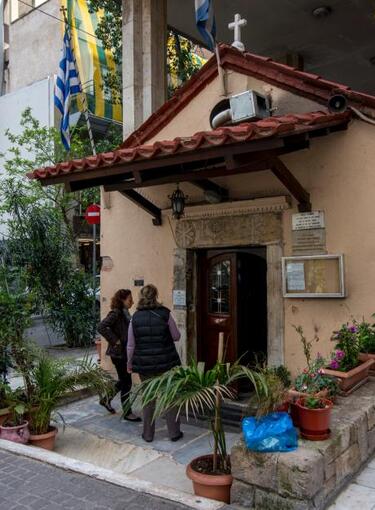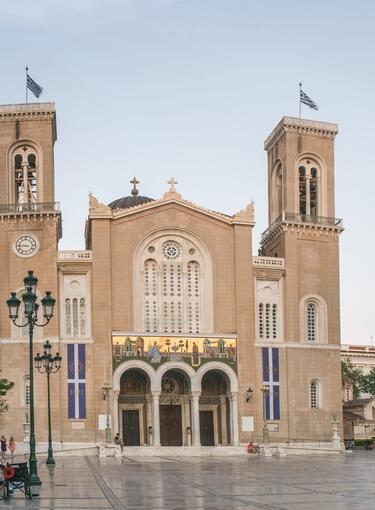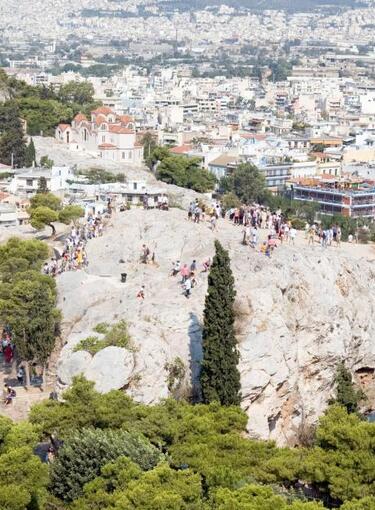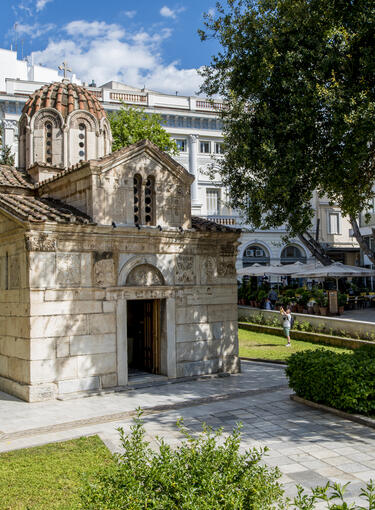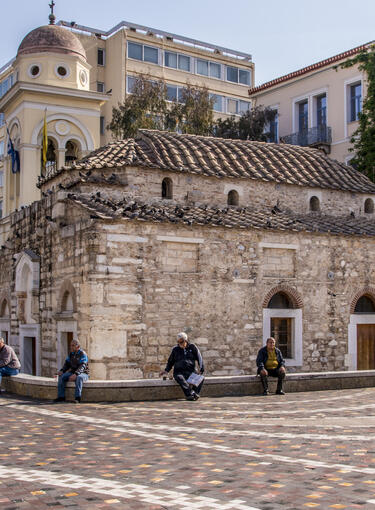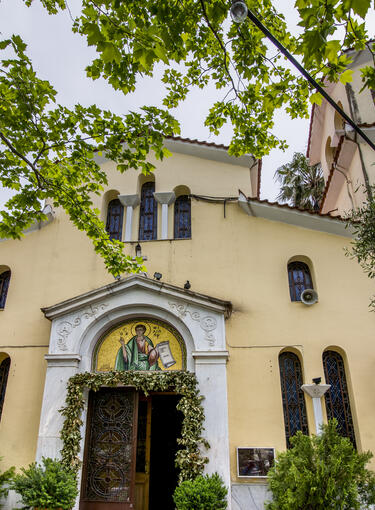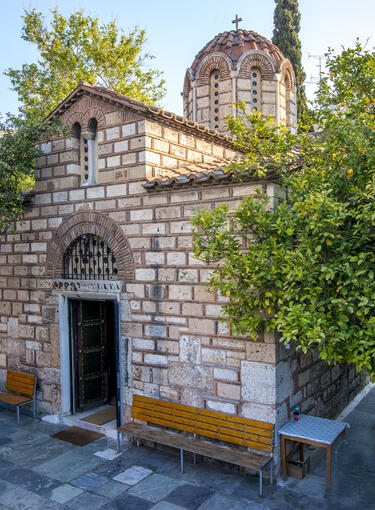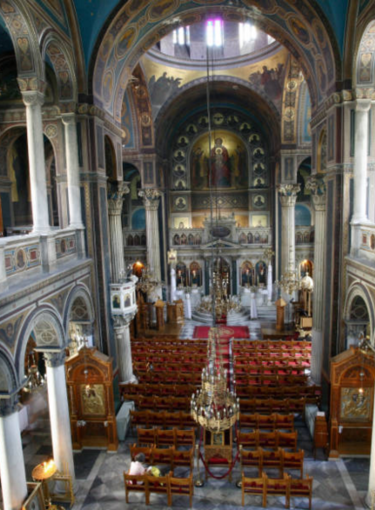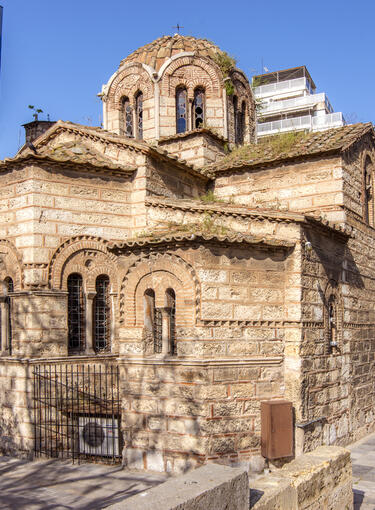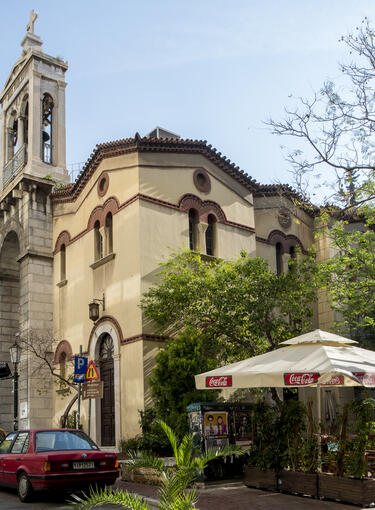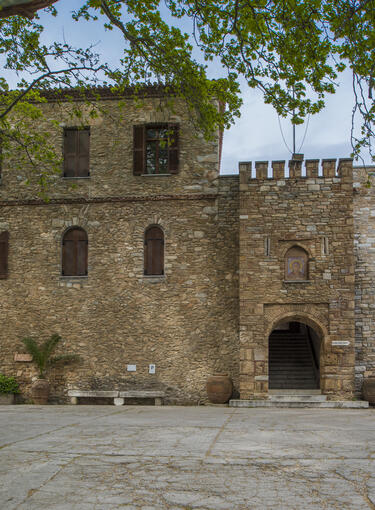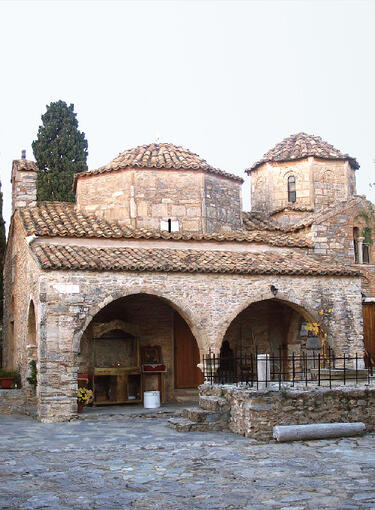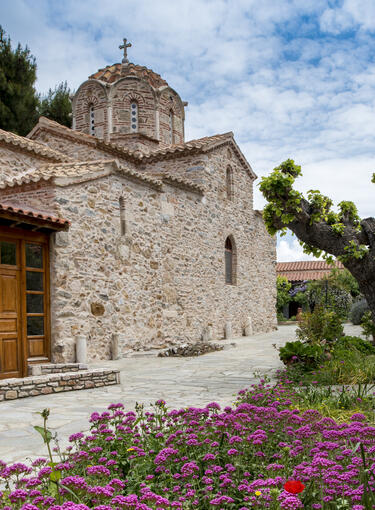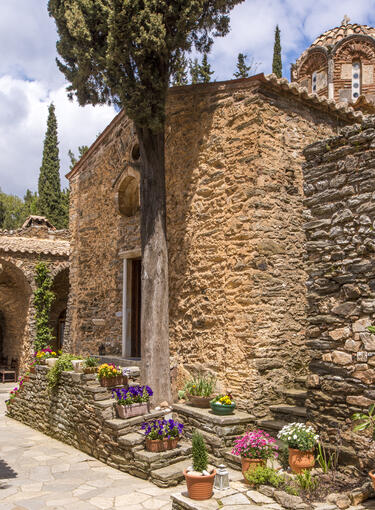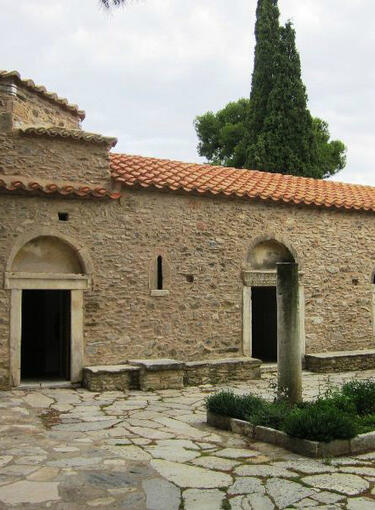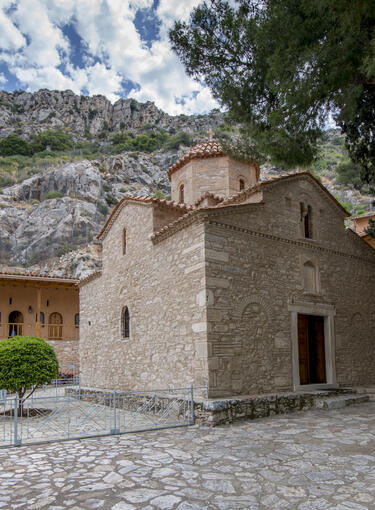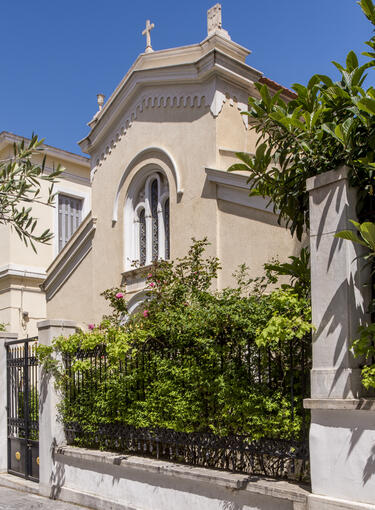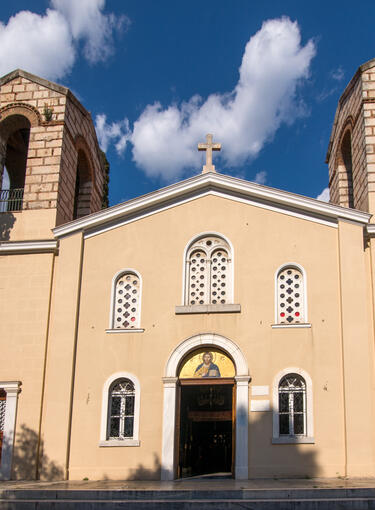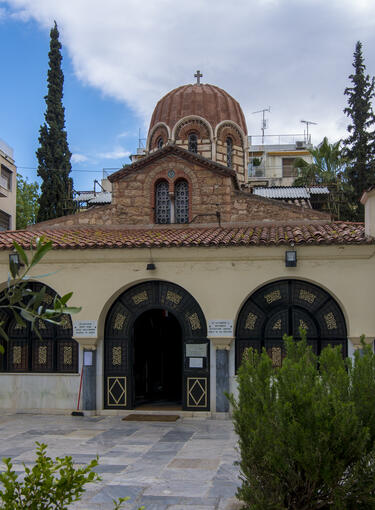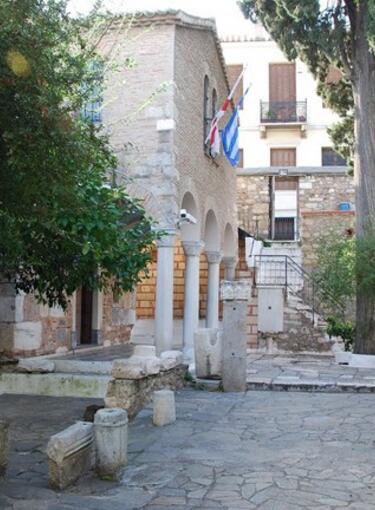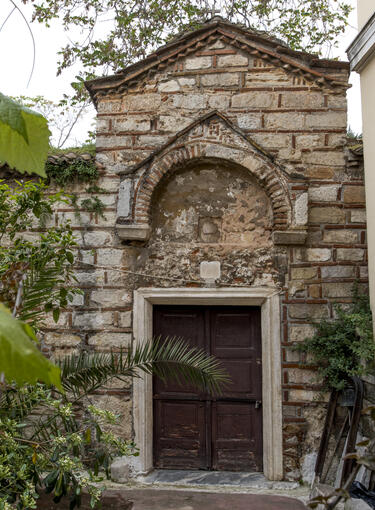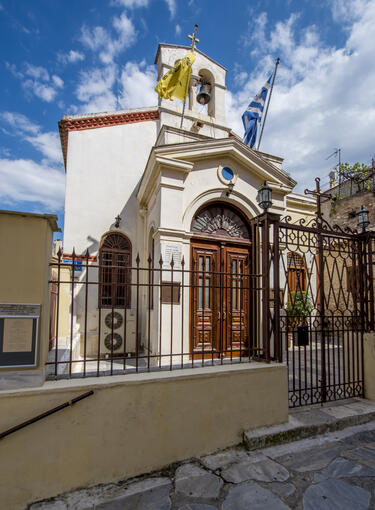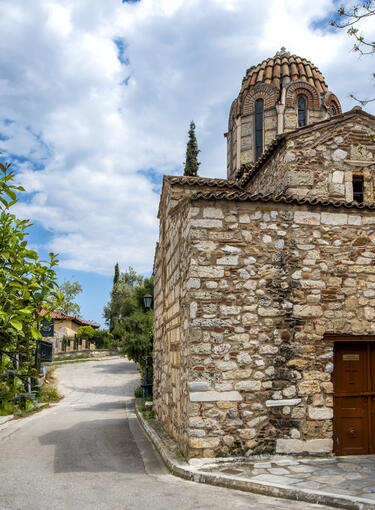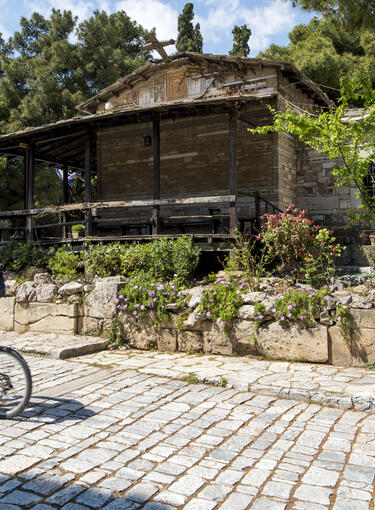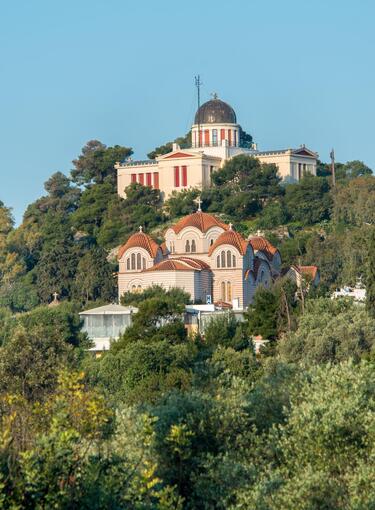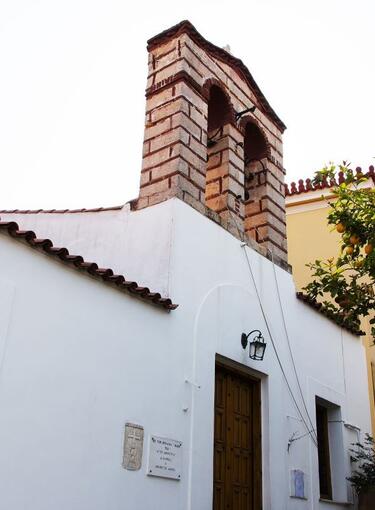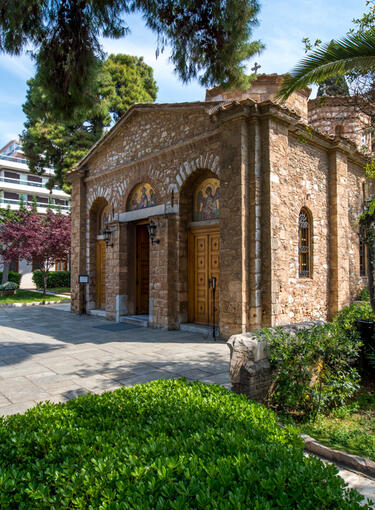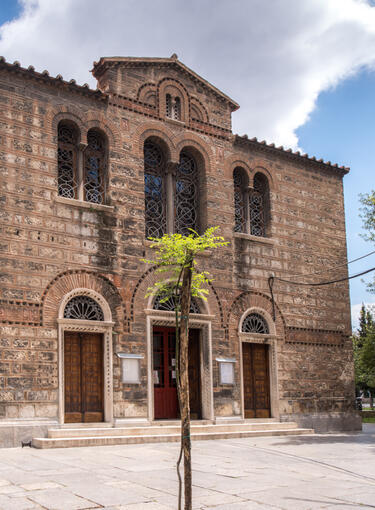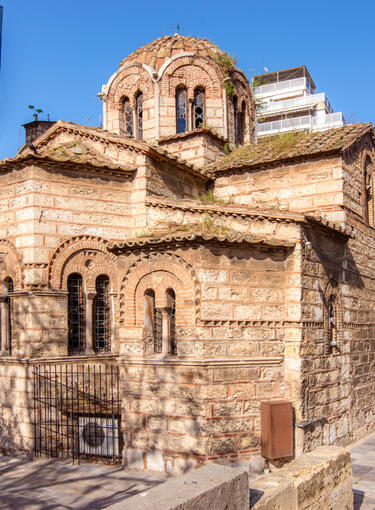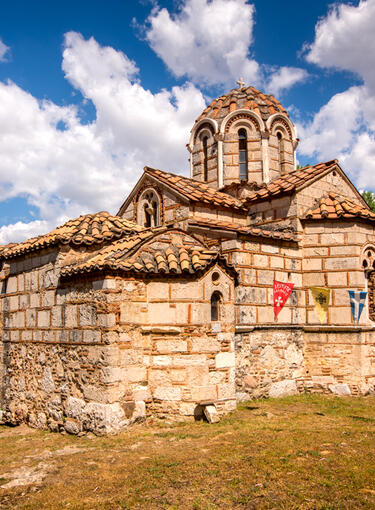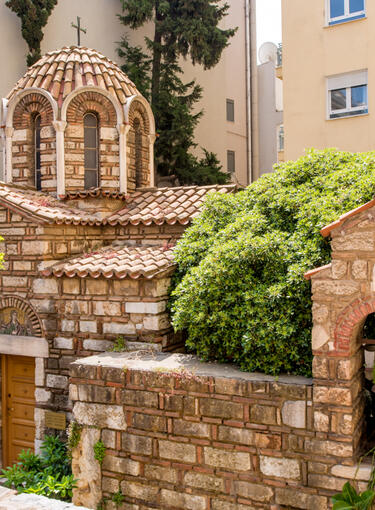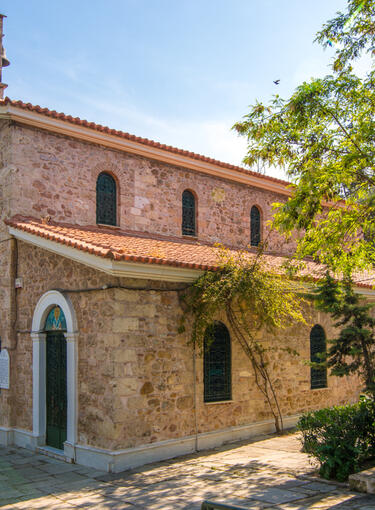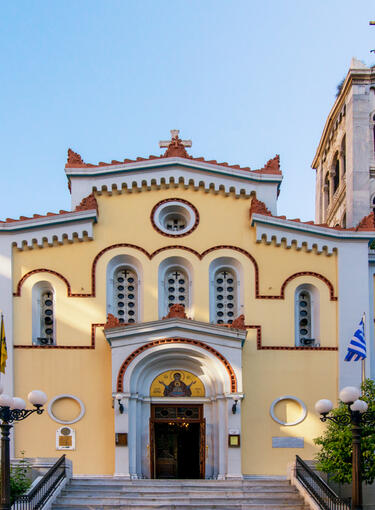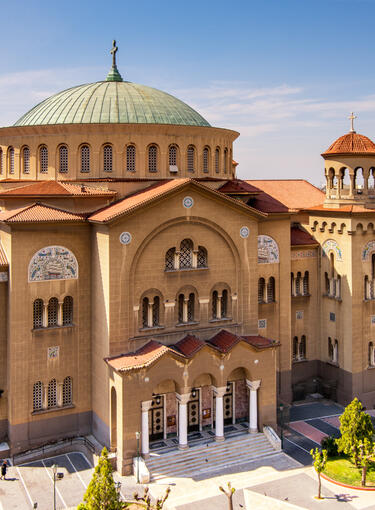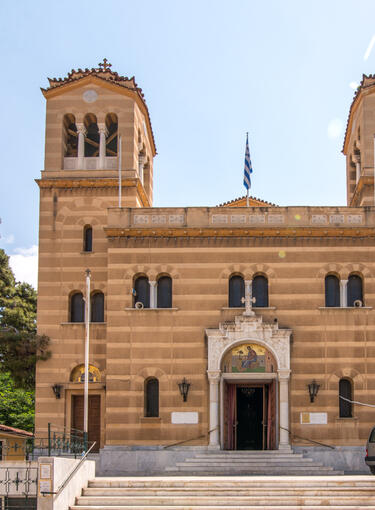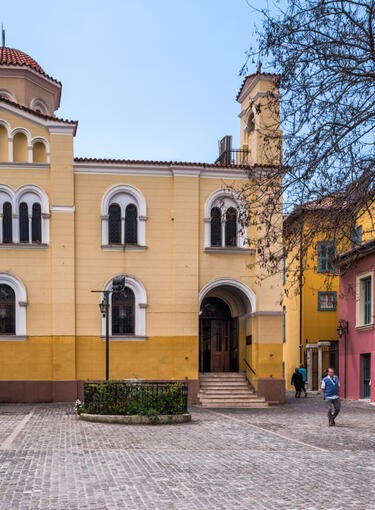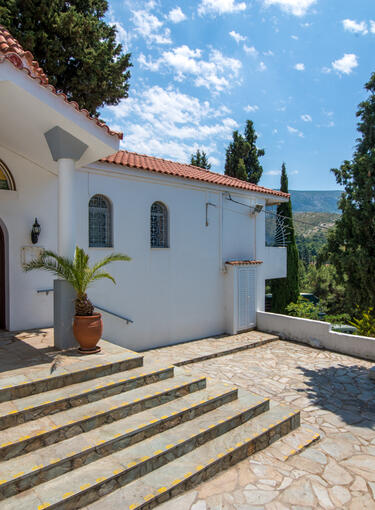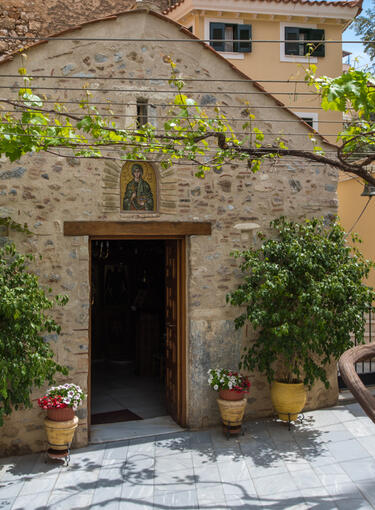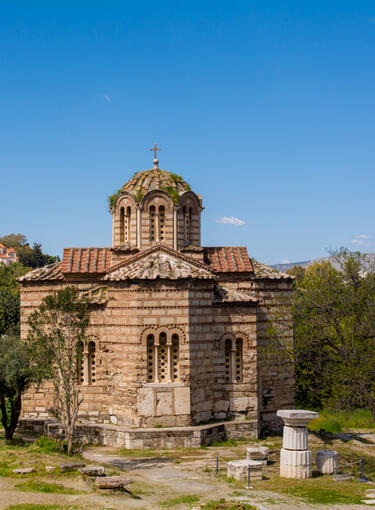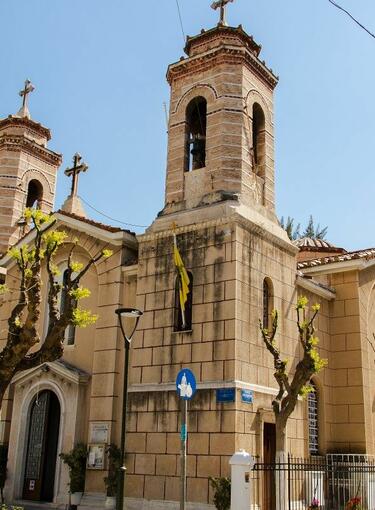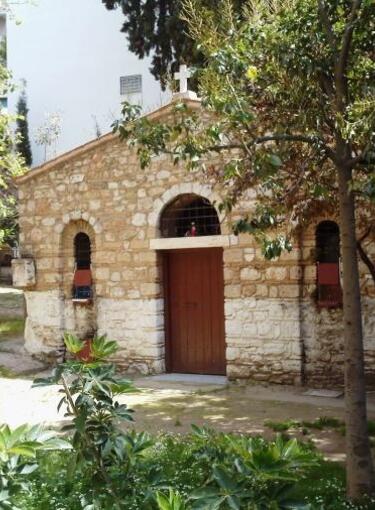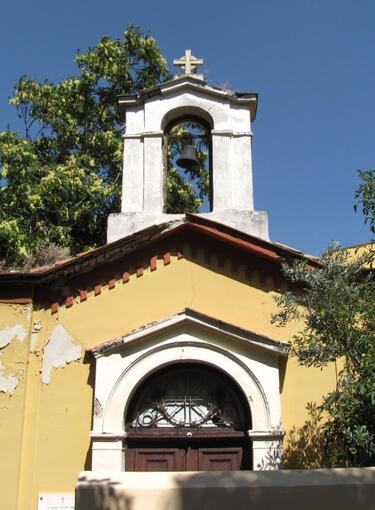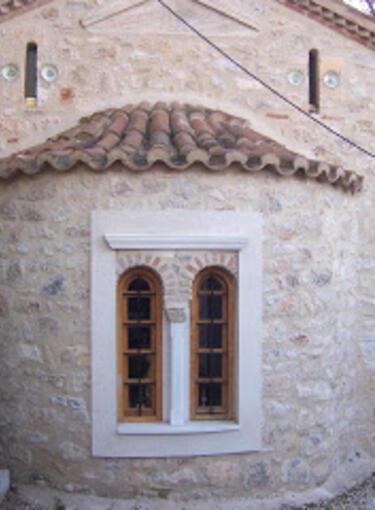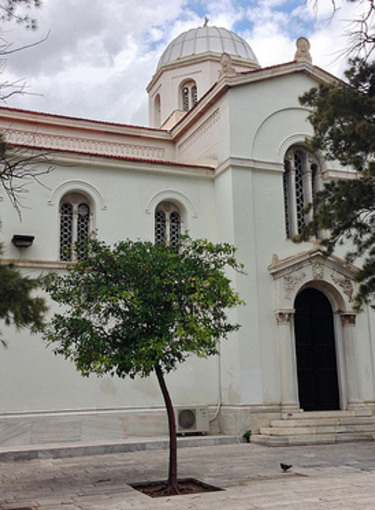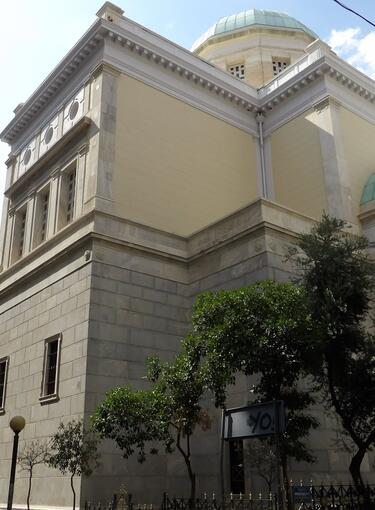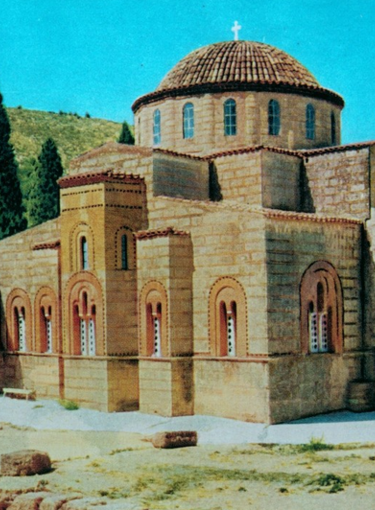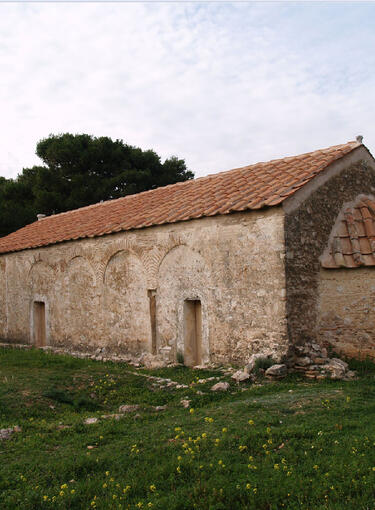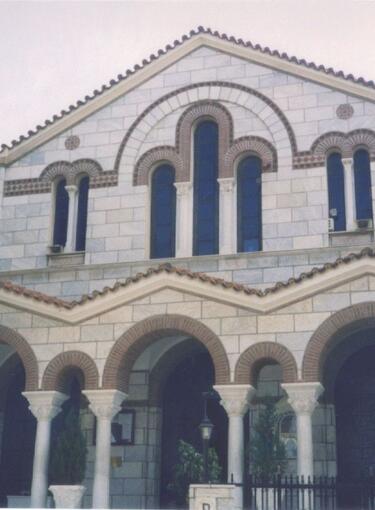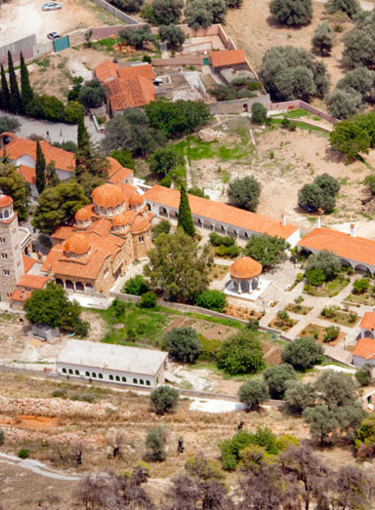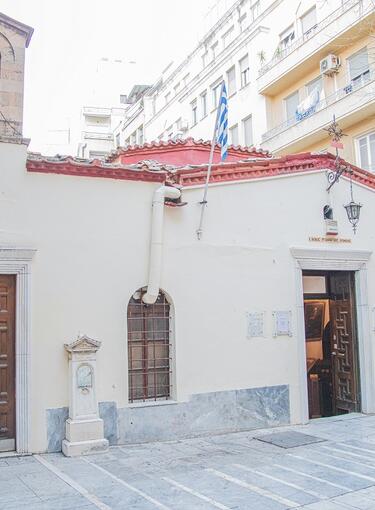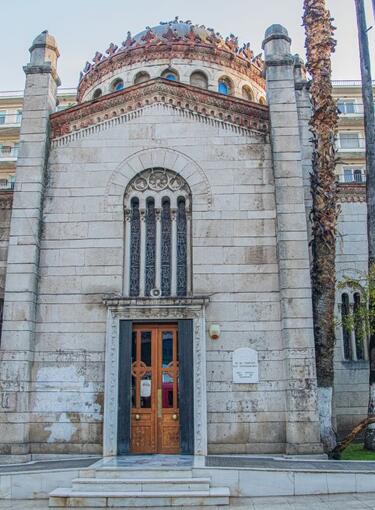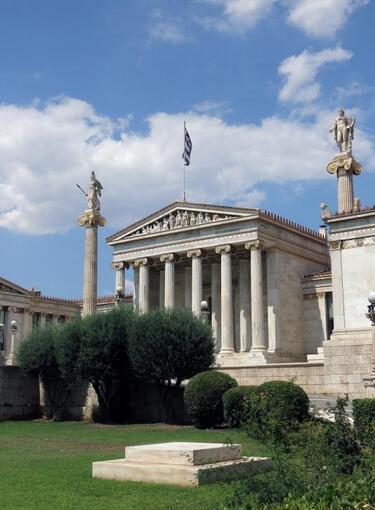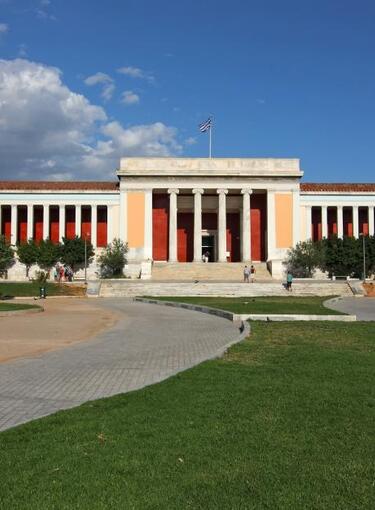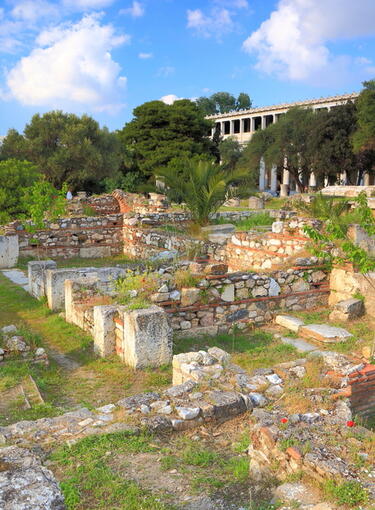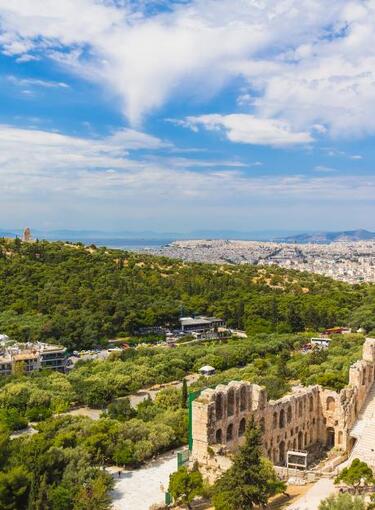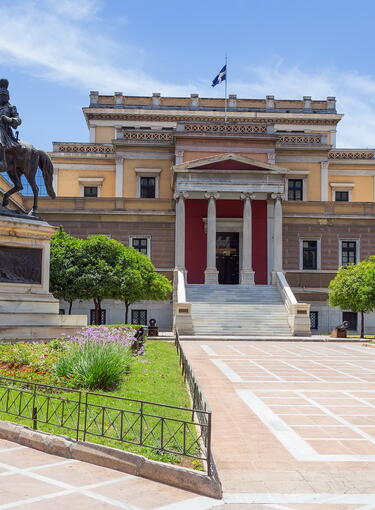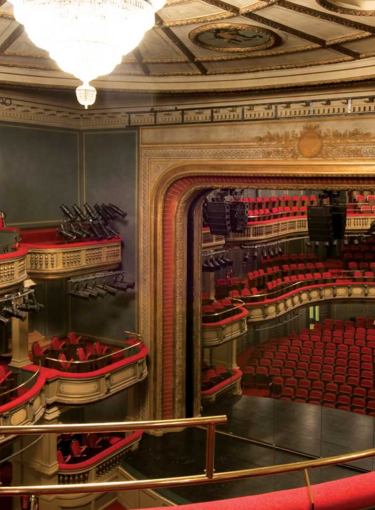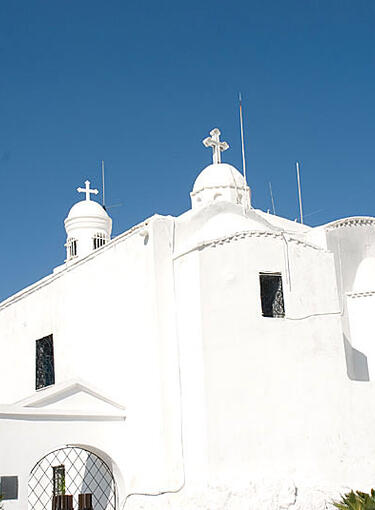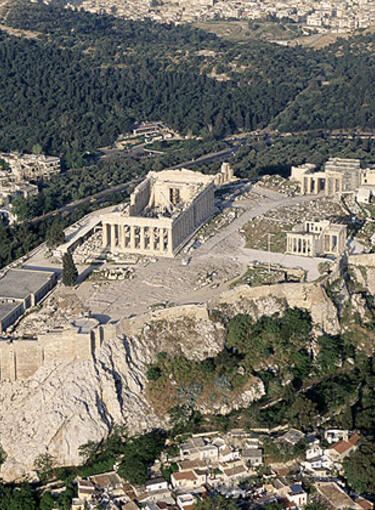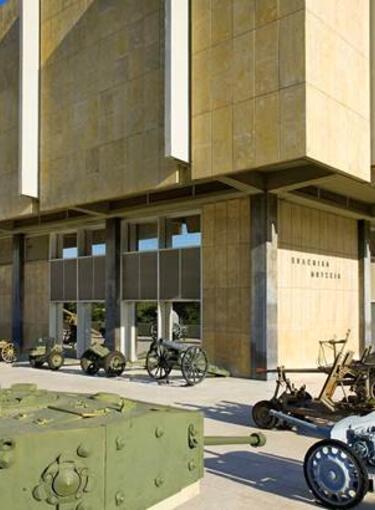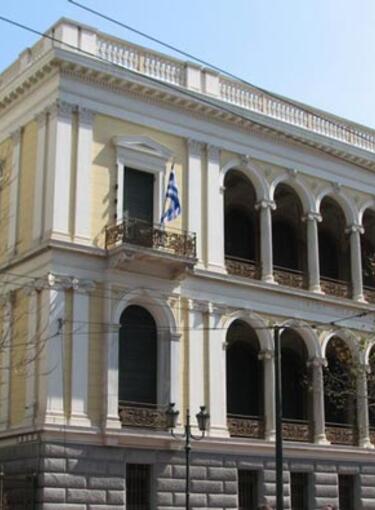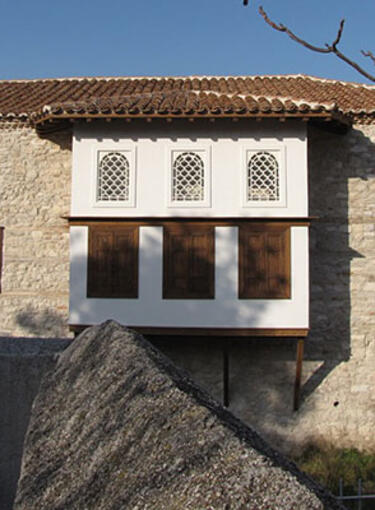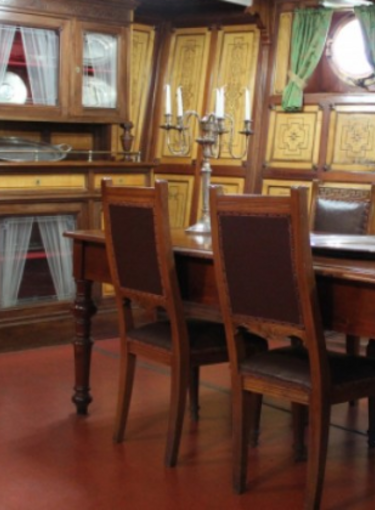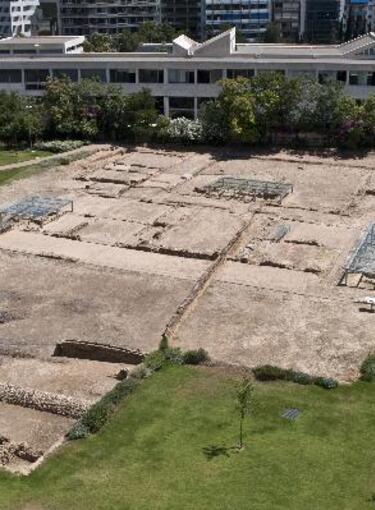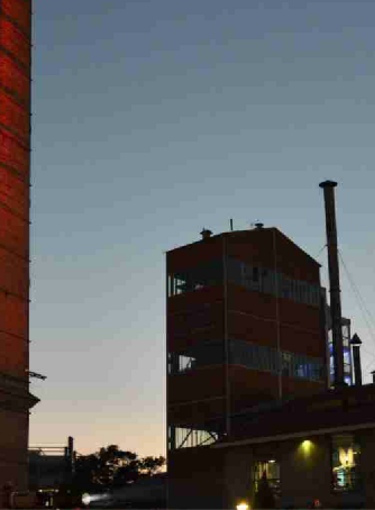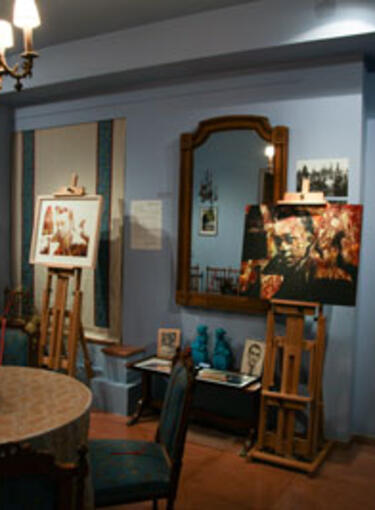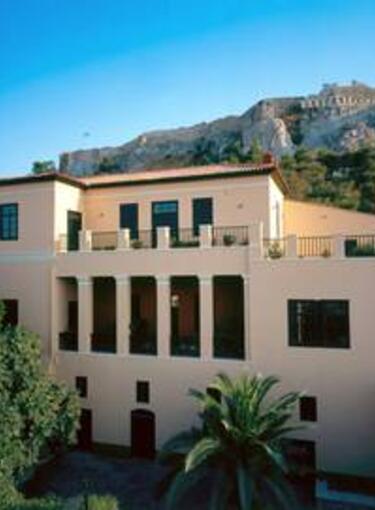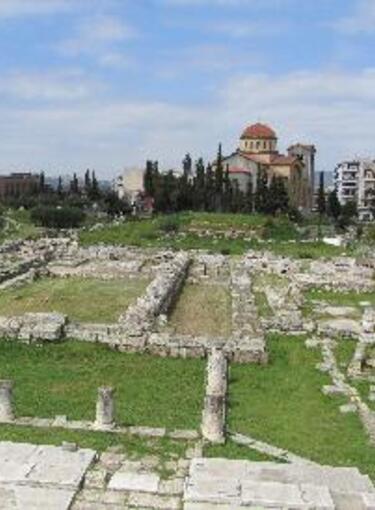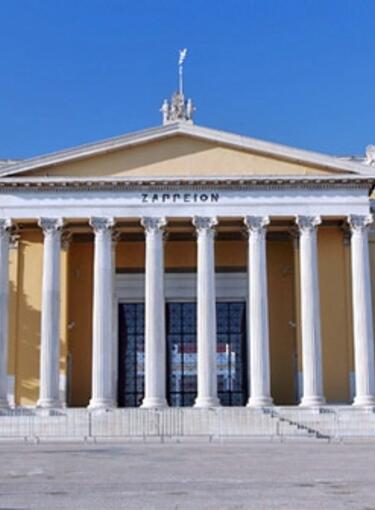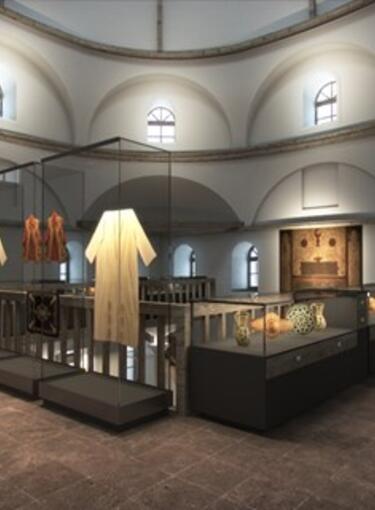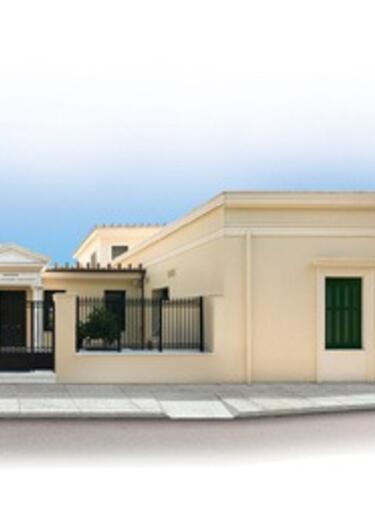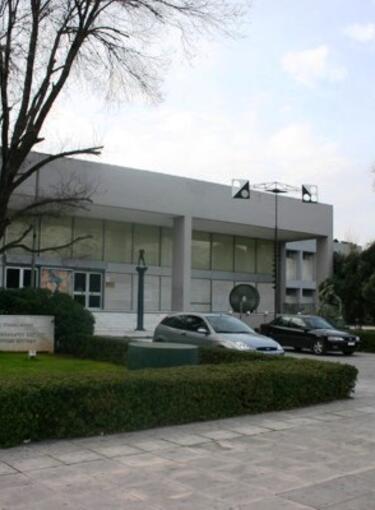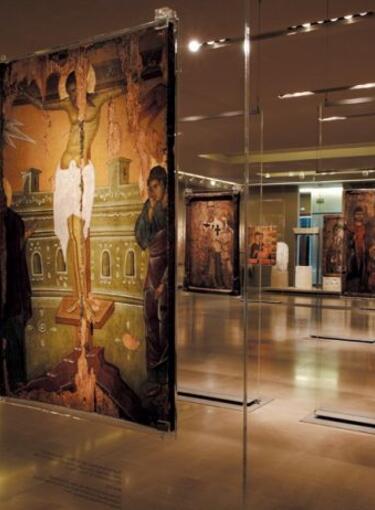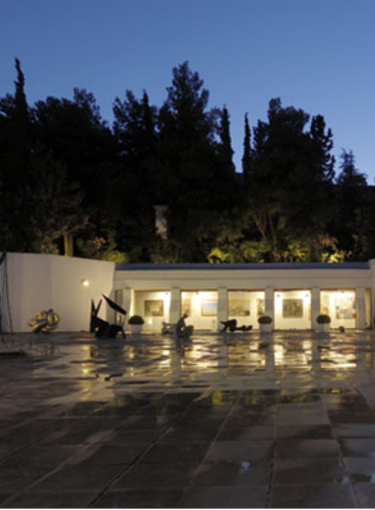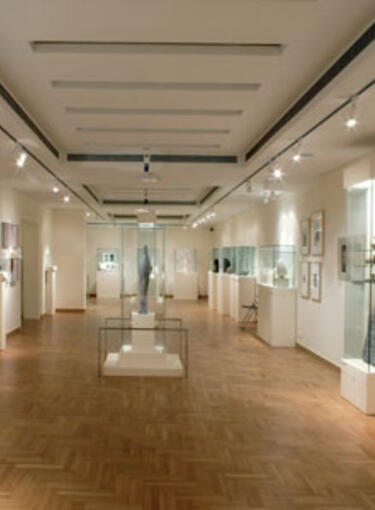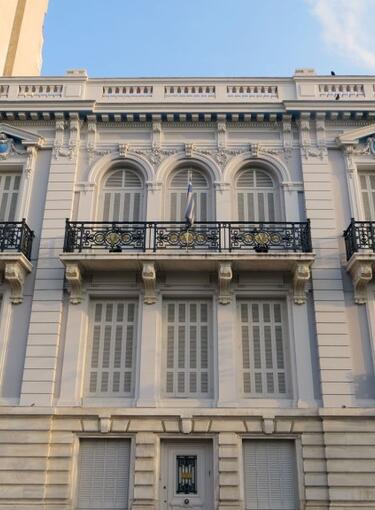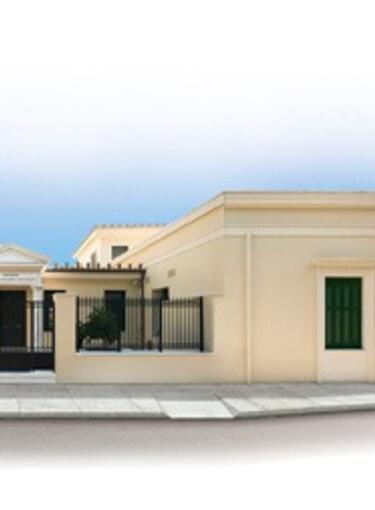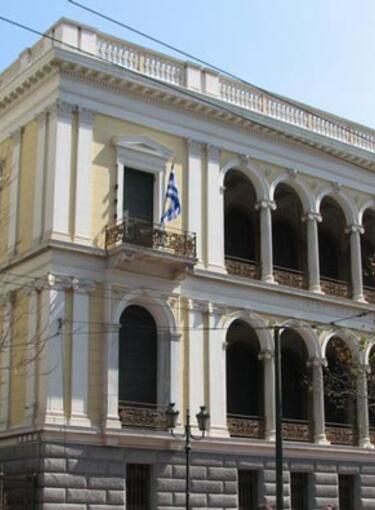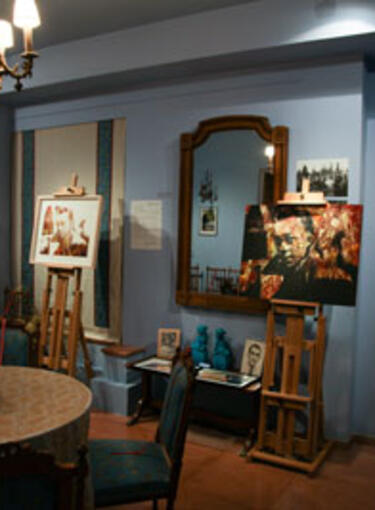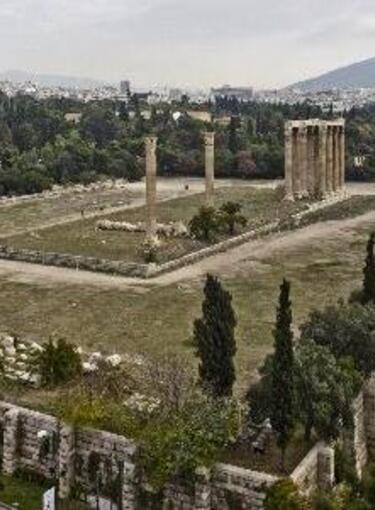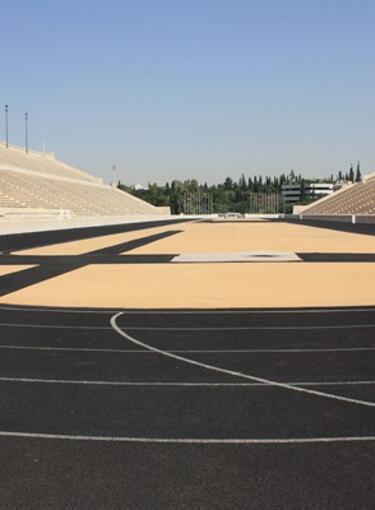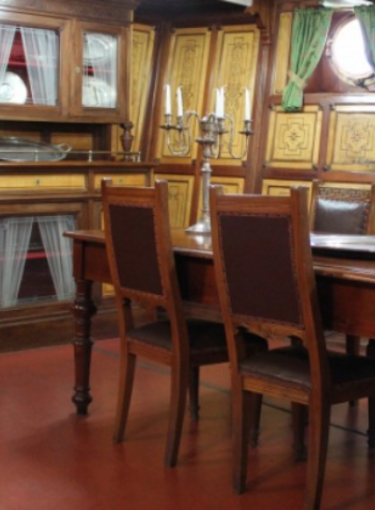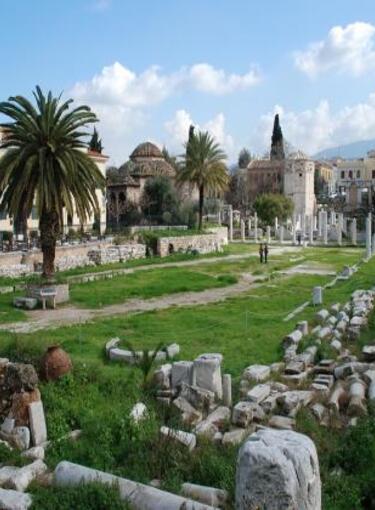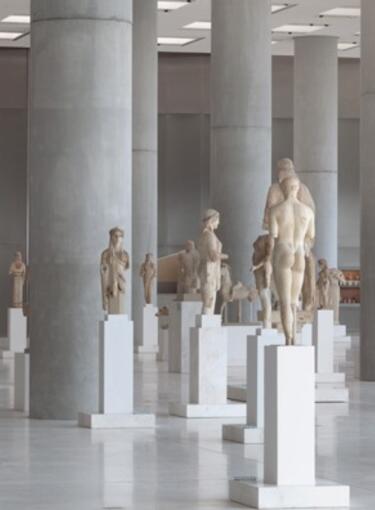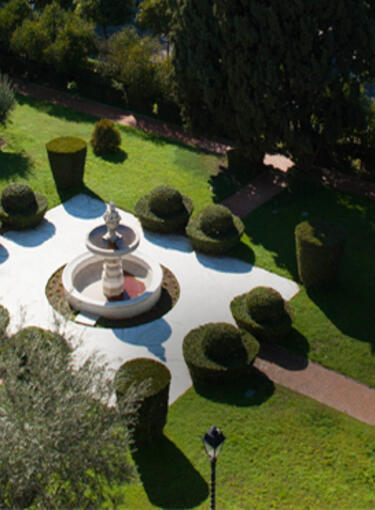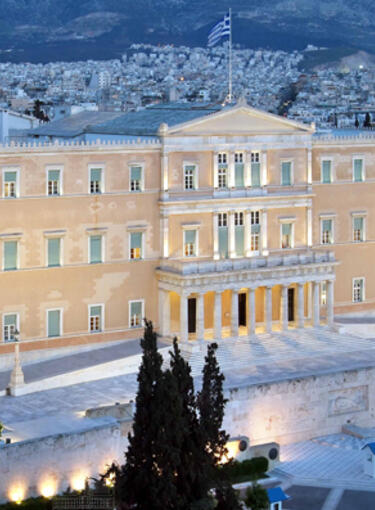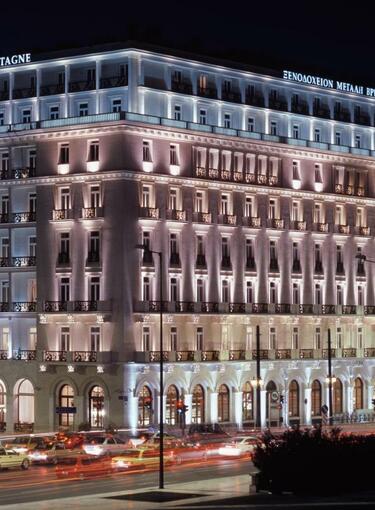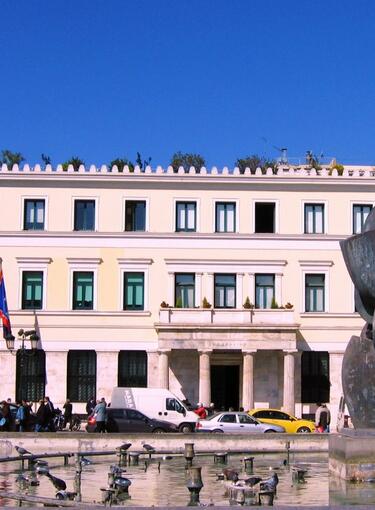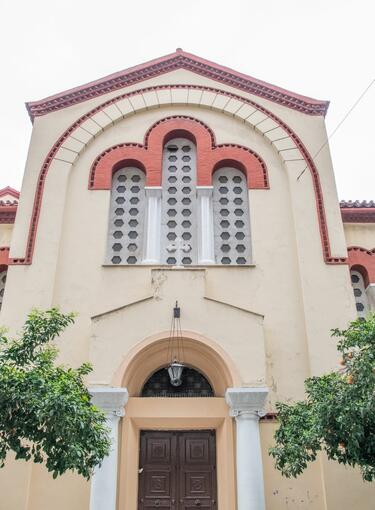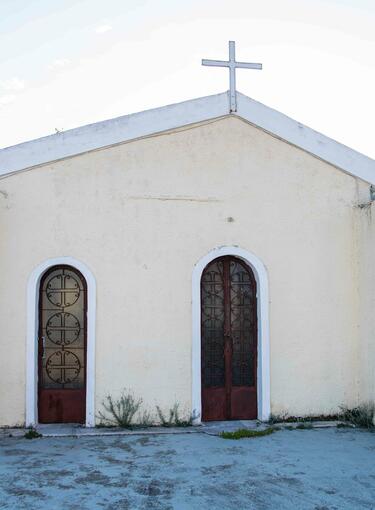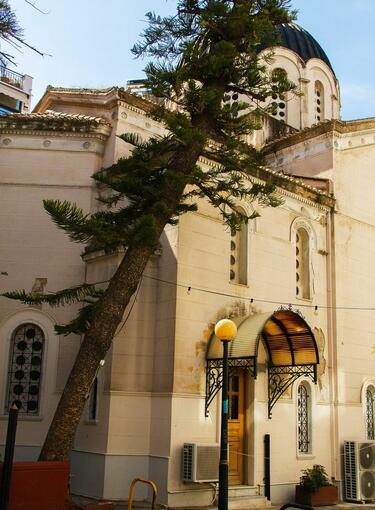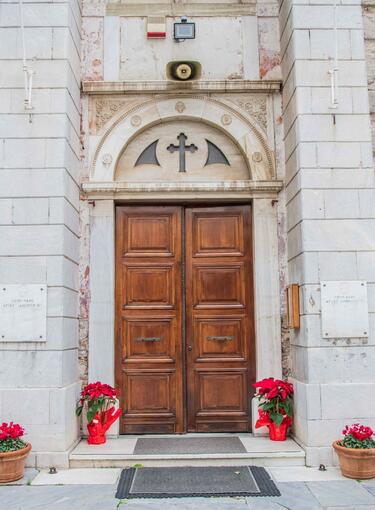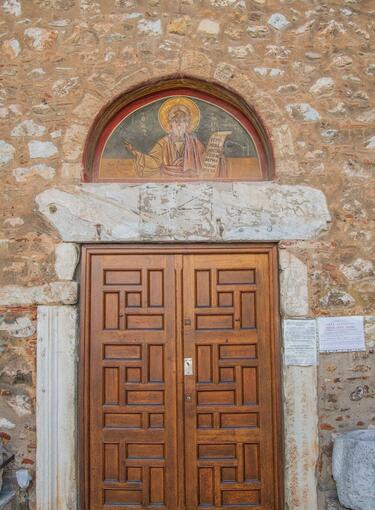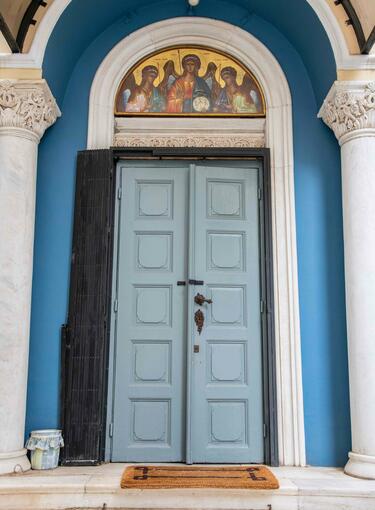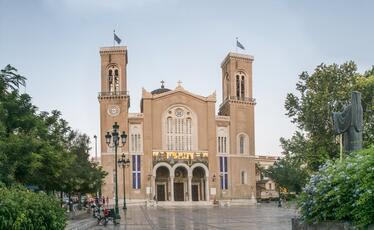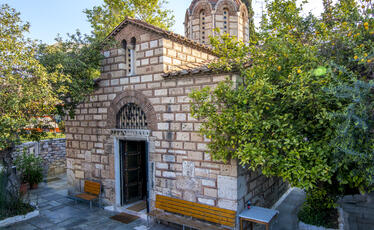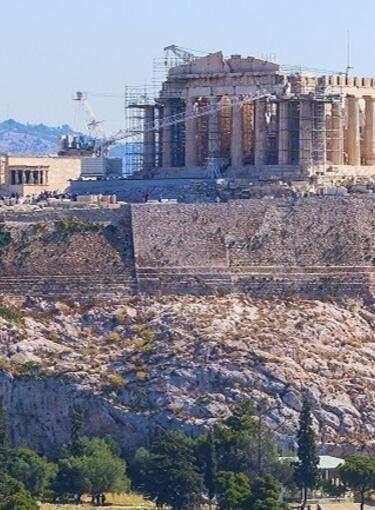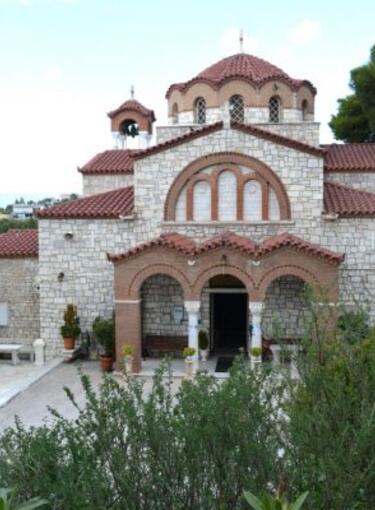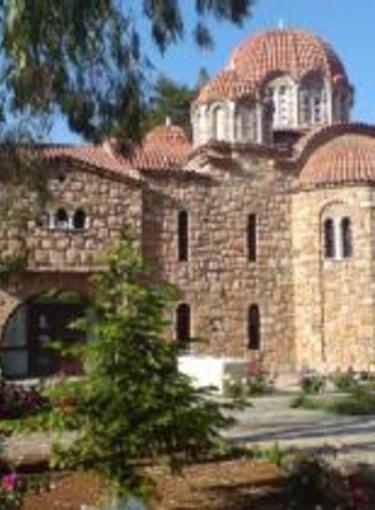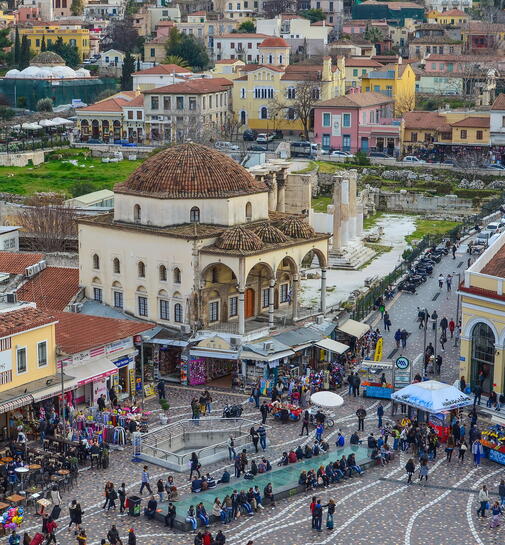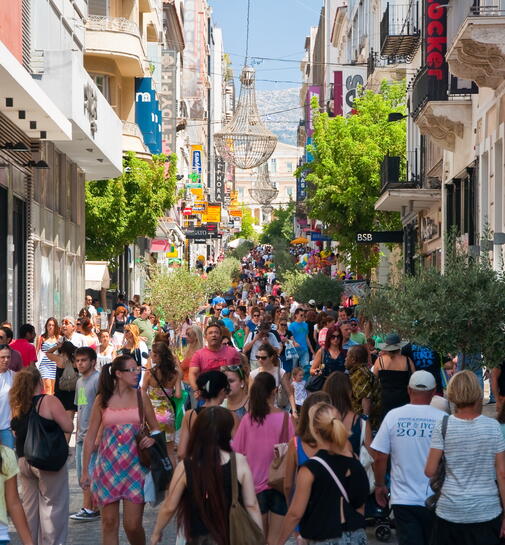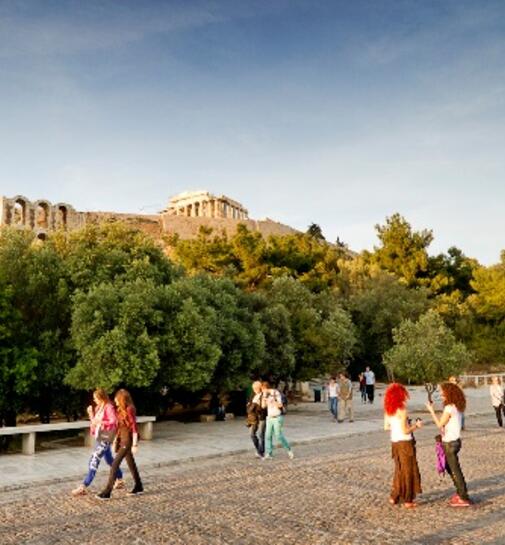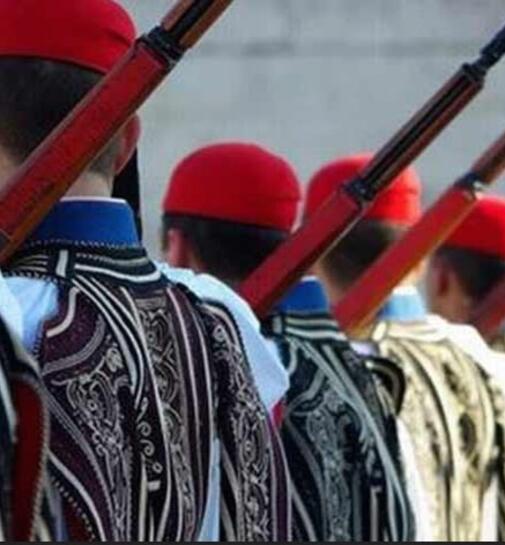At the historical commercial centre of Athens, in the middle of the picturesque square that nowadays constitutes a point of reference for the city, one can see the impressive church of Agia Eirini.
In the same spot there was a small church of the Byzantine Period, which in the beginning of the 18th was the Metochi of the Monastery of Penteli. During the Greek Revolution in 1821 it suffered serious damages; it was repaired in 1834-1835 and became the most important church of the new capital, which hosted official religious ceremonies. In order to cover the increasing demand, they assigned its reconstruction to the architect Lysandros Kaftantzoglou. Works started in 1846 and the inauguration of the church took place in 1850, while its interior decoration was completed later, in the period 1879-1892. The icons were made by Spyridonas Hatzigiannopoulos, the most important representative of ecclesiastical painting in the second half of the 19th century. As a matter of fact, this is considered as his most important work. The church continues to be used as the Metropolitan one until 1862 and during this period it was related to significant events of modern Greek history. Here they made the celebration of the first national anniversary in 1838, the funeral of Theodoros Kolokotronis in 1843, and the doxology for the establishment of the autonomy of the Church of Greece in 1850.
The church is a three-aisled basilica with a dome and two steeples of neoclassical style, an original building that combines western renaissance with Byzantine influences. Another architectural characteristic is the presence of two side conchs, which refer to the catholicons of Mount Athos.
For its construction they used material from demolished churches in Athens and from ancient ruins. The range of the subject matter of its wallpaintings is limited, with very few figures of saints, while in several of the walls there are passages from the Holy Bible. Its impressive gold-plated screen was donated by Tsar Nikolaos in 1850.
The church celebrates on the day of Agia Eirini, on May 5th.
Saint Irene on Eolou Str.
Magnificent, elaborate, elegant, frought with history, the Church of Saint Irene towers on the same-named square, at no. 36 Eolou Str.
At the site of the present church there was another Byzantine church dedicated to Saint Irene, which, as to its larger part, was burned down, in the first year of the Greek Revolution. Initially, the first repair works of the church were undertaken by Edward Schaubert, and yet, the relatively small church was not sufficient. It could not cover the increasing needs of Christians.
Thus, it was requested from Lysandros Kaftatzoglou, one of the greatest architects of the 19th century, to undertake the expansion and eventually the construction of the church. The works started in 1846 and four years later the inauguration took place, long before the completion of the interior decoration of the church in 1892. In fact, the tradition reports that for the construction structural materials were used from 70 old demolished churches.
With his exceptional talent, Kaftatzoglou erected a church with ancient Greek elements and a Romanesque style. The church is a three-aisled timber-roofed basilica. It has bell-towers, a narthex, a matroneum and choirs which recall the monasteries of the Athonite peninsula. It is an architectural jewel, a church of neoclassical style with Western renaissance and Byzantine influences.
At the Western side of the church, one notices the inscription ‘IN CHURCHES BLESS GOD’ while just above the inscription the church is graced by a row of elaborate windows. The imposing bell-towers of the church loom at the right and left of its central gate.
In the interior of the Church feature the western–style murals, works by the icon painters Spyridon Hatzigiannopoulos and Athanasios Vasiliou. The aesthetic decoration of the church were undertaken by the ornament painters Kottas and Petas. The iconographic programme of Saint Irene is restricted thematically, with few figures of Saints, while on several walls there are loci from the Holy Scripture. Among the most significant works of the church are the two large murals in the conchs of the transepts. On the southern conch is depicted Saint Paul the Apostle, who preaches before the Council of Areios Pagos, a work by Spyridon Hatzigiannopoulos and on the northern conch Jesus teaches the Judeans in Jerusalem, a work by Athanasios Vasiliou.
Unique and of special aesthetic value is the gold-plated templon of Saint Irene, a gift by the Tsar of Russia Nicholas the First, in 1850. Its cost is estimated to have amounted to 48,000 francs, a sum which was especially substantial for that era.
The marble ambo was designed by Kaftatzoglou and was crafted by the Fytalis brothers.
On the conch of the sanctuary is located Theotokos the Platytera, while on the conchs of the Prothesis and of the Diaconicon the visitor beholds the Birth and the Descent from the Cross. These works are dated approximately in the 1910s and are by E. Papadakis. On the dome hovers the Pantokrator and on the dome drum the twelve Apostles.
In the pendentives are depicted the four Evangelists, works by Hatzigiannopoulos. Of the same creator are also the prophets who are located in the pendentives of the lowest vault which is situated at the east. Saints and prophets are depicted on the piers of the central nave in thirty two in number busts.
Ιcons of eminent icon painters, such as by Maloukis, Kriezis and Zografos are located at the icon stands of the church.
Imposing is the roof of the church, with the inscription ‘SPIRIT IS GOD’ while impressive are the roof coffers, which are preserved in an excellent condition and which gave cause so that the state declared the Church of Saint Irene, in 1972, as a listed monument.
Informations
More
Date:
1846-1892 (19ος century)
Season:
Post-Byzantine
Celebrates:
5th of May
Holy Metropolis:
Archdiocese of Athens
Address:
Aiolou 36, Historical Centre 10232
Access:
Monastiraki Metro Station


